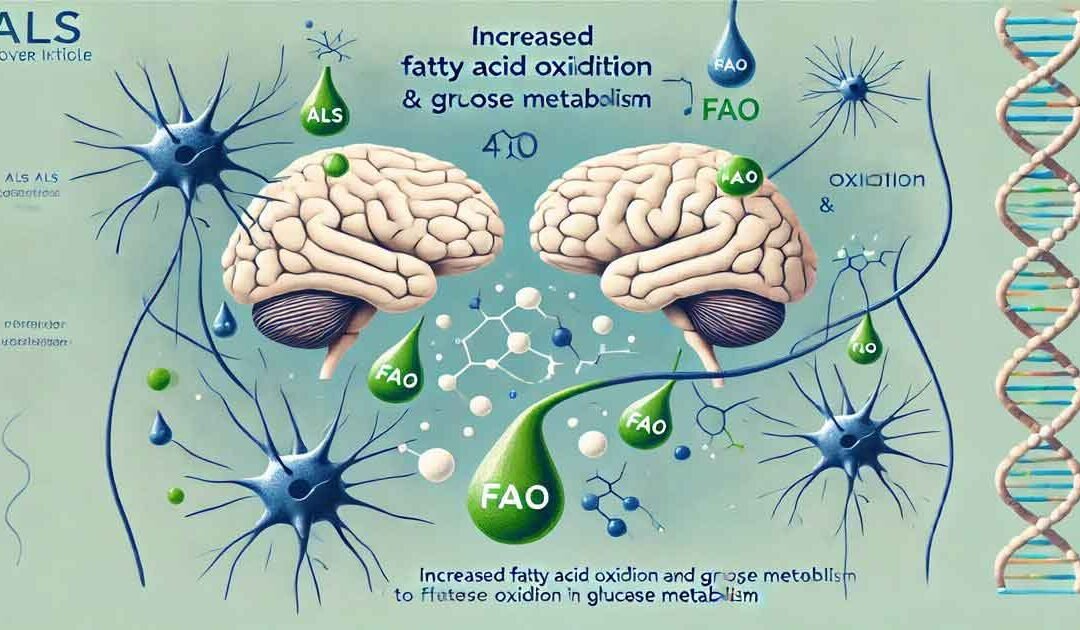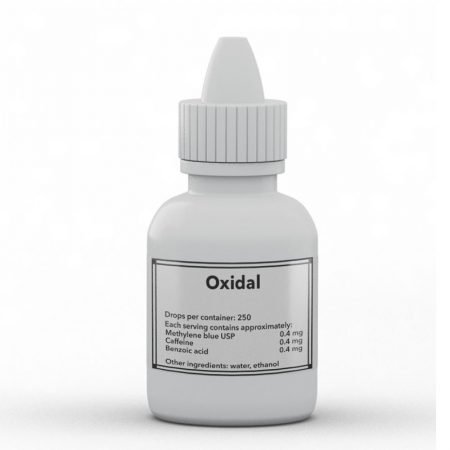В миналото направих няколко публикации за ALS (амиотрофична латерална склероза), който се характеризира с хиперактивност на надбъбречните жлези и потисната гонадна функция, както и с митохондриална дисфункция и недостиг на мед. Също така е известно, че нефамилната АЛС се среща 4-5 пъти по-често при активни/пенсионирани елитни спортисти. Всички тези открития категорично сочат, че АЛС е свързан със стреса и нерегулирания метаболизъм. В проучването по-долу се обяснява, че метаболитната дисрегулация на АЛС е свързана с повишено окисление на мастните киселини (FAO) и повишена гликолиза, в резултат на което се губи глюкоза. Повишените нужди от глюкоза и повишеното ѝ разхищение вследствие на регулираната гликолиза очевидно са основна причина за прогресивния характер на това състояние. По този начин осигуряването на допълнителни (5-10 по-високи от нормалните хранителни нива) количества глюкоза в храната позволява на засегнатите неврони да оцелеят много по-дълго и да бъдат много по-устойчиви на дегенерация. Така че според проучванията по-долу метаболитният фенотип на ALS не е много по-различен от този на рака и диабета (тип I). По този начин, също като тях, ALS също е изтощително заболяване. Ако осигуряването на допълнителна глюкоза с храната и/или възстановяването на глюкозния метаболизъм с химикали като DCA е терапевтично за ALS, може ли същият подход да работи при рак и диабет I? Моето предположение е ДА.
Сега, проучването разглежда само осигуряването на допълнителна глюкоза на неправилно функциониращите неврони. То не разглежда причините, поради които пациентите с ALS се разграждат толкова бързо. Виновникът за това, загатнат от повишената FAO, е повишената липолиза. Същата тази неконтролирана липолиза е отговорна за изтощаването, наблюдавано при диабет I и (отчасти) при рак. Така че, като се имат предвид ползите от ниацинамида и аспирина за ограничаване на прекомерната гликолиза, бих се осмелил да предположа, че добавянето на някое от тези хранителни вещества към режима на допълнително хранене с глюкоза би било драстично по-ефективно.
В едно от интервютата си Пийт разказва за свой приятел, който преди около 20 години е бил диагностициран с ALS и който не само е все още жив, но е и много активен и работи. Неговата тайна? Очевидно 3-5 таблетки аспирин дневно, когато болестта започва да се проявява, след което намалява до 1 таблетка дневно около 6 месеца по-късно и продължава да приема по 1 таблетка дневно до днес. Покойният Стивън Хокинг е диагностициран с ALS през 60-те години на миналия век и оцелява в продължение на десетилетия, макар и с тежки двигателни дефицити. По-късно през живота му лекарите започват да се питат дали състоянието му не е ALS, защото, знаете, никой не може да оцелее с ALS толкова дълго. Чудя се дали самопризнатият навик на г-н Хокинг да взема по една таблетка аспирин два пъти седмично има нещо общо с това…
https://www.ncbi.nlm.nih.gov/pubmed/29057168
“…These models provide the tools for genetic and dietary interventions that can distinguish between cause and consequence. For example, although the primary cause remains unknown, in ALS muscles, there seems to be a reduction in glycolysis that is compensated by utilization of alternate fuels such as fatty acids (Figure 1). In contrast, in motor neurons, the impairment in mitochondrial function may lead to compensatory mechanisms that counterbalance the defects in oxidative phosphorylation such as increased glycolysis as reported in cultured cells, or altered interactions with lactate producing glial cells.
Another study using asymptomatic SOD1G86R mice indicated decreased glucose handling in glycolytic muscles of the diseased animals [43]. This is due to concerted effects caused by downregulation of the key glycolytic enzyme phosphofructokinase 1 (PFK 1), and upregulation of pyruvate dehydrogenase kinase 4 (PDK4), an enzyme that inhibits pyruvate dehydrogenase complex through phosphorylation, thus blocking conversion of pyruvate into acetyl-coA. As a consequence, the lipid pathway was stimulated in these animals as early as during the pre-symptomatic stage, and remained active till end stage of the disease, thus switching the fuel preference towards fatty acids by suppressing glucose utilization. Consistent with this, treatment with DCA, a specific inhibitor of PDK, restored normal mRNA expression of Pdk and Pfk1 mRNAs, and resulted in decreased expression of denervation and atrophy markers. This was further translated at the functional level by restoration of muscle strength, larger muscle fibers and overall weight gain in DCA-treated animals compared to non-treated SOD1G86R mice. Thus altogether, this and previous reports show that as the glycolytic muscles progressively lose their ability to utilize glucose, they switch to lipids as an alternate energy source, and that, this metabolic switch happens largely in the early pre-symptomatic stage.
https://elifesciences.org/articles/45114
https://uanews.arizona.edu/story/people-als-may-benefit-more-glucose
“…Increased glucose, transformed into energy, could give people with amyotrophic lateral sclerosis, or ALS, improved mobility and a longer life, according to new findings by a University of Arizona-led research team.”
People with ALS use more energy while resting than those without the disease, while simultaneously they often struggle to effectively make use of glucose, the precise ingredient a body needs to make more energy. Experts have not known exactly what happens in a patient’s cells to cause this dysfunction or how to alleviate it. “This project was a way to parse out those details,” said Manzo, who described the results, published online in eLife, as “truly shocking.”
“…The study revealed that when ALS-affected neurons are given more glucose, they turn that power source into energy. With that energy, they’re able to survive longer and function better. Increasing glucose delivery to the cells, then, may be one way to meet the abnormally high energy demands of ALS patients. “These neurons were finding some relief by breaking down glucose and getting more cellular energy,” Manzo said.”
“The fact that we uncovered a compensatory mechanism surprised me,” Zarnescu said. “These desperate, degenerating neurons showed incredible resilience. It is an example of how amazing cells are at dealing with stress.” The novelty of the findings partially lies in the fact that metabolism in ALS patients has remained poorly understood, Zarnescu said.”
“…Their findings were consistent with a pilot clinical trial, which found a high carbohydrate diet was one possible intervention for ALS patients with gross metabolic dysfunction. “Our data essentially provide an explanation for why that approach might work,” Zarnescu said. “My goal is to convince clinicians to perform a larger clinical trial to test this idea.”
Източник:
- Колко пресни портокала са ви необходими, за да изчистите черния си дроб от мазнини?
- Хроничният стрес понижава допамина и причинява психични заболявания
- Естрогенът и кортизолът, а не андрогените, потискат имунитета
- Инхибирането на ароматазата (за намаляване на естрогена) може да доведе до лечение на рак на стомаха.
- Потиснатият имунитет, а не вирусите (HPV), може да е причина за рака на кожата











